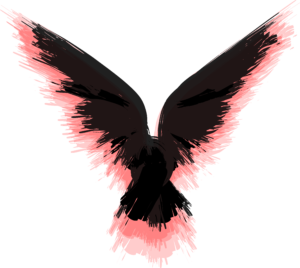How could burn treatments impact your character? What challenges might they face in preventing infections? What are the historical treatments that might work in a post-apocalyptic story? What should you never do to treat burns? Find out on this episode.
Last week we covered Burns 101. All the types of burns, categories of severity, and common potential complications. If you missed it, go back and listen to episode 27, Burns 101. This week we will cover burn first aid and treatments.
Let me start by adding a disclaimer. I am, in no way, shape, form, or fashion, a doctor or medical person. This is not medical or treatment advice, and I am not telling you what to do or not to do. This is solely for the purpose of inspiring ideas for writing about burns in a fiction story and nothing else.
Now that that is out of the way, let’s get into this!
We’ll start with chemical burns. Chemical burns can happen from liquids and powders. In both cases, your character will want to remove any clothing with the chemical on it and any jewelry they have on.
The first thing to know that I just learned, powdered chemicals should always be brushed off first (not with bare hands) and then flushed with water for 20 minutes. This is because water can cause a reaction that either makes things worse or creates a whole new chemical.
If the chemical is a liquid, immediately rinse the area in cool water for 20 minutes. Remember not to use high-powered water because it could damage the skin and injure the already burned skin.
If someone’s eyes come in contact with a chemical, they need to be rinsed immediately! If they have contacts, they need to be removed. Today many places have eye-washing stations. These shoot water into your character’s eyes, and they should keep their eyes open while they are being flushed. That sounds easier said than done, but I have been lucky enough not to need this. Historically, people would lie down or tilt their head back and pour cups of water in their eyes to flush the chemicals out.
If you are writing a modern story in the USA, OSHA, standing for Occupational Safety and Health Act which was passed in 1970, has requirements for every work that has chemicals to both have safety equipment to properly handle the chemicals and equipment to treat chemical burns. Other countries have things similar to this. An example is that Canada has the Canadian Centre for Occupational Health and Safety (CCOHS).
If a chemical is inhaled, your character will need fresh air immediately. Then seek medical attention.
If a chemical is ingested, your character will need to call poison control. At least, that is who you call here in the USA. If you are writing a different country, you will need to see if they have one there. Historically they treated these types of things by inducing vomiting and then eating charcoal. When they felt like they were burning, they would be given milk or water if there was no milk. The assumption was that since milk works on the burning of peppers, it might work with other things that have been ingested too.
First–degree burns are when the outer layer of the skin, called the epidermis, is burned. This is common with touching things like a stove, curling iron, or even a sunburn. This does not usually need medical treatment; some aloe vera and over-the-counter pain medication should be enough.
Second-degree burns are when a burn goes through the top layer of skin, called the epidermis, and down to the second layer of skin, called the dermis. This is actually the most common type of burn. It is painful, can blister and swell, and will be red or brown in color. They can take three weeks to a few years to heal.
First aid for second-degree burns is to put it under cool tap water for 10 to 15 minutes. If tap water is unavailable, it can be immersed in cool water for the same length of time. Don’t pop blisters, as they might become infected. Remove jewelry from the burned area. Do not put ice on a burn; never use butter or mayo. Butter or mayo can trap heat, making the burn worse. Also, if they see a doctor, they will first scrap the butter of mayo off the burn. Nurses who do this say it is agonizing for the patient. Keep the burn victim hydrated. Make sure to protect any burned fingers or toes from the ones beside them by placing a barrier of dry, sterile, lint-free gauze or cloth between them. These are normally treated with an aloe vera lidocaine mix and over-the-counter pain meds in modern times.
Third–degree burns, Third-degree burns are when a burn goes through the outer layer of skin (the epidermis), through the middle layer of skin (the dermis), and the layer of fat under your skin (hypodermis.) This type of burn can also burn sweat glands, hair follicles, and, most importantly, nerves. When the nerves are burned, the burn will not hurt right away. However, this is deceptive and masks the seriousness of these types of burns.
Third-degree burns can look charred, dried, leathery, and swollen and have black, white, or bright red coloring. There can also be second-degree burns around the third-degree burn.
Modern stories will follow current guidelines. Run under cool water for 15-20 minutes. Remove jewelry from the burned area. Remove clothing from the area. If it is melted into the skin, cut around the clothing around the wound. Elevate the burned area if it is possible. Always call 911 or whatever ambulance assistance is in the country you are writing. Remember, never place butter, mayo, or things like this on the burn.
Fourth-degree burns get a little more complicated, as there are many things that break this down even further into more degrees of burns, but I’m not going to because I’m not an expert. Instead, I will go with the burn definition from burnsurviver.com. They define it as “(full thickness burns) affect all layers of the skin and also structures below the skin, such as tendons, bone, ligaments, and muscles. “
These types are traumatizing to the burn victim and anyone around them when it happens. Third or fourth-degree burns have all the nerves burned off. Skin grafts are common. Infection is a high danger, especially in a historical or apocalyptic story. This is also the stage of life-threatening burns. Your character is likely to go into shock. It will likely leave disfigurements in historical stories and likely in post-apocalyptic stories.
The modern first aid is to remove jewelry from the burned area and remove clothing unless it is stuck to the skin. Then it should be cut around. Flush with water only if it is a chemical burn. Elevate the burned area above the heart, if possible. Place a sheet or blanket over the person if they look pale or are shivering, call 911, and get medical help immediately.
Do not do any of the following,
* Place ice on the burn
* Place butter or other ointments on the burn
* Remove clothing stuck to the skin
* Do not peel the dead skin off
In both third and fourth-degree burns, your character risks going into shock. In the case of burns, it is categorized as a traumatic shock. Shock is when there is a sudden drop in blood flow throughout the body. When this happens, the organs are not getting enough oxygen. The skin can be cool, clammy, pale, and/or ashen. Other signs might be rapid breathing, rapid pulse, enlarged pupils, nausea, vomiting, weakness, fatigue, dizziness, fainting, and more. There can also be mental changes, such as changes to mental function, abnormal behavior, agitation, or intense anxiety. Shock has several stages but can potentially lead to death.
First aid for shock is to lay the character flat on their back, assuming that was not the burned part of the body, and elevate their feet 12 inches above their heart. Keep the person still. The more they move, the less oxygen to the organs. Loosen any tight clothing. Cover them with a blanket to keep them from becoming chilled. It is important for your character to get medical help, if possible, in your story as soon as possible. Not only are fourth-degree burns life-threatening, but shock is also life-threatening.
Burn treatment has advanced by leaps and bounds over the last 50 to 100 years, starting around WW2. I’ll let everyone do their own research on modern treatments because that would be a full two or three podcasts in itself.
However, I will cover historical burn treatments, some of which could be used in a post-apocalyptic story. Many of these include things that are proven to aid in infection prevention and aid in healing, such as honey, vinegar, and milk. Others called for things like mud, poop, and my least favorite dead vulture guts. Some even used bloodletting, where they drained amounts of blood from the person. The amount was dependent on whatever the doctor said it should be. Here are a few examples of healing recipes, but not even close to a full list. I’ll try to leave off the totally ridiculous ones, like burning the burn until it stops hurting. Don’t do that!
In ancient Egypt, some of the treatments were
* resin and honey (sometimes this was placed on linen strips)
* gum, goat hair, and milk from a woman who gave birth to a son
In the fifth and sixth centuries, China and Japan used tea leaves rich in tannic acid. While this one is still used in some places around the world, it is not recommended in America. If you want more information on why, look into the Coconut Grove Fire in Boston, USA, at a nightclub in 1942.
In ancient Greece, they used a mixture of lard, vinegar, and an oak bark solution.
Ancient Rome used honey, bran, and cork, while others believed it was better left to open air than covered with grease. Modern medicine has proven that it is best to not let them dry out for third and fourth-degree burns.
There was one consistent thought in most known history. If the burn reached the bone in an extremity, they would likely amputate the limb, as this was believed to stop infections more. Not everyone did this, but the majority of people in history did.
In post-apocalyptic stories, they will likely use honey, wine, or other types of alcohol, vinegar, or even tea soaks. As someone who has had vinegar spilled onto a cut, the idea of having it placed on a burn sounds extremely painful!
In history and modern burn treatments, the dead skin is cut off. In modern times by a licenced, trained doctor that knows what they are doing. This should not cause bleeding until they hit live tissue. Dead tissue will not bleed.
Another thing to think about is shock. I can’t find any historical treatment for shock outside of offering water or other liquids. Broth, soup, bone broth, and these types of things were seen as giving food and liquid at the same time. In the late 1800s, the IV solution came into use. It was made of two cups of boiled water (covered for 15 minutes) and 1 teaspoon of salt. They wanted to make sure to boil all the germs out of the water. I imagine this would be used again after an apocalypse, assuming they had the equipment to get it into the body.
If there were no IVs, there are orals ways to rehydrate. Some of these include a 1:1 water and Gatorade mix or a 1/3 teaspoon salt with 1/3 teaspoon baking soda mixed with a lightly sweetened drink or juice. It would be important to stay away from juices that are high in potassium and risk potassium poisoning. Some examples are orange juice and apple juice. The idea is to give as much as the burn victim can take without getting nauseous. Vomiting will not help rehydrate.
I read the ideal urine output in the situation is 50 to 100 ml or 1 2/3 to 3 1/3 ounces per hour. I have no idea how you would go about measuring that unless you have a very tiny measuring cup.
Antibiotics are something else to think about. In most places across the world, plant tinctures were used. Some are better than others. I advise looking up the plants used in the area you are writing about. There are far too many around the world to talk about in one podcast.
Many doomsday preppers stock up on fish biotics. These are antibiotics for fish. They are not regulated by the FDA. Some people swear by them, and others swear against them. I have seen them do amazing and not-so-amazing results.
Sliver is something that has been used since before Christ in Greece. Not sterling silver, but real pure silver. They were used as drinking cups or by placing a silver coin in the cup, then drinking out of it with the coin on the bottom. Try not to let your characters choke on the coin. Or do. Whatever works best for your story.
Before antibiotics, it was known that many pathogens could not survive silver. Colloidal silver is defined as a liquid with tiny silver parts in it. I can tell you from personally seeing this that when they say tiny, they mean smaller than the eye can see. This is a treatment that has been used around the world and is still used in some places today. It will very likely be something that is used in a post-apocalyptic story as a form of antibiotic. People still make this at home even today. It is not recommended by the medical community. Whether you believe it works or not, when people get desperate, they become willing to try things they would not otherwise.
Fun fact: In 2008, a man named Paul Karason appeared on the Today Show with real blue skin. He looked like a Smurf. Paul developed this condition by drinking 10 or more ounces of colloidal silver daily for several years. This is a condition called argyria that is cause by consuming too much silver.
What could possibly go wrong:
Likely to go wrong: Your character had their hand burned with a chemical, and they didn’t take their jewelry off soon enough. Their hand swelled, and they had to cut their ring off to treat the burn.
Likely to go wrong: Your character gets an infection from their severe burn.
Possible to go wrong: Your historical or even post-apocalyptic character burned their arm or leg down to the bone, and the doctor chose to amputate the limb.
Possible to go wrong: Your character’s wound dressings are not changed often enough, and they become infected.
Unlikely to go wrong: Your character tries to cut off the dead skin from a burn and cut down more deeply than they needed, likely because they had never done this before.
Unlikely to go wrong: Your character that is in shock drinks so much that they end up vomiting so much that it make the dehydration worse. This could easily lead to death.
Improbable but still technically in the realm of possibilities: Your historical character tried to use an IV to rehydrate someone, and they made the solution wrong. This could be deadly.
Improbable but still technically in the realm of possibilities: Your character drinks so much colloidal silver that their skin turns blue.
Helpful links to learn more:
First aid:
https://burncenters.com/burns/burn-services/
https://www.healthline.com/health/chemical-burn-or-reaction#treatment
Historical Treatments:
https://pubmed.ncbi.nlm.nih.gov/23888738/
https://burnstrauma.biomedcentral.com/articles/10.4103/2321-3868.143620
https://www.wikidoc.org/index.php/Burn_historical_perspective
Historical Treatment Videos:
The IV:
Silver:
https://www.purecolloids.co.uk/index.php/pages/silver-history




